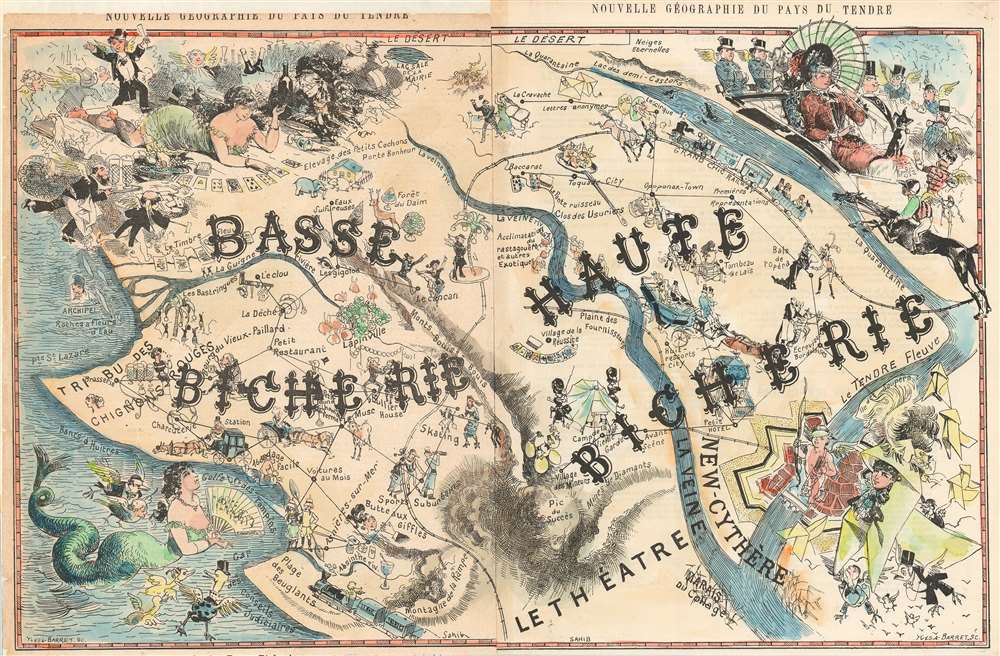This item has been sold, but you can get on the Waitlist to be notified if another example becomes available, or purchase a digital scan.
1881 Sahib Pictorial Map of Provinces of Prostitution in the Country of Love
BasseHauteBicherie-sahib-1881
Title
1881 (dated) 13 x 20 in (33.02 x 50.8 cm)
Description
Haute Bicherie and Basse Bicherie
Haute Bicherie is next to the province of Théâtre which in itself is a commentary on the creator's opinion of the relationship between the theater and prostitution. New-Cythère is situated right where Théâtre and Haute Bicherie meet and near the confluence of Le. Tendre Fleuve and La Veine Rivière. Numerous cities and towns are identified throughout both provinces, most of which are not easily translated, as the whole map is written in French argot, or slang. One such town near the top border, La Cravache, is, however, translatable and means 'the whip', which makes perfect sense when the vignette is considered with the town. Next to La Cravache is Lettres anonymes (Anonymous Letters), which is followed by Le Cirque, (Circus). The Grand Chic Railway connects Haute Bicherie and Basse Bicherie, which is, as the name suggests, much less classy. Towns like Lapinville (Bunnyville), Brasserie, and Le Cancan abound, with the Absinthe River and the 'Needy-man' River running into the bay. The Golfe des Tompin (The Vulgar Gulf) and the Bancs d'Huitres (Bank of Oysters) are situated off the coast with a mermaid. These two themes are reinforced by the vignette of the very elegant woman in the upper right corner in contrast with the woman lying on the floor playing cards and smoking a cigarette.Publication History and Census
This map was created by an artist known as Sahib and engraved by Yves and Barret for La Vie Parisienne and published in the December 24, 1881 issue. We have been unable to locate any other known examples.Cartographer
Yves et Barret (fl. c. 1870 - 1890) were French engravers active in the late 19th century. They engraved political cartoons and other images for French periodicals, including La Vie Parisienne. This partnership was known for creating works using gillotage, a now obsolete lithographic process wherein a drawing was made on or transferred to zinc and then dusted with resin, which adhered to the drawing. The resin then acted as an acid-resist when the entire plate was immersed in acid, creating a relief block that could then be inked and printed from. This printing technique was popular with newspapers, as it was completely compatible with blocks of type. More by this mapmaker...

